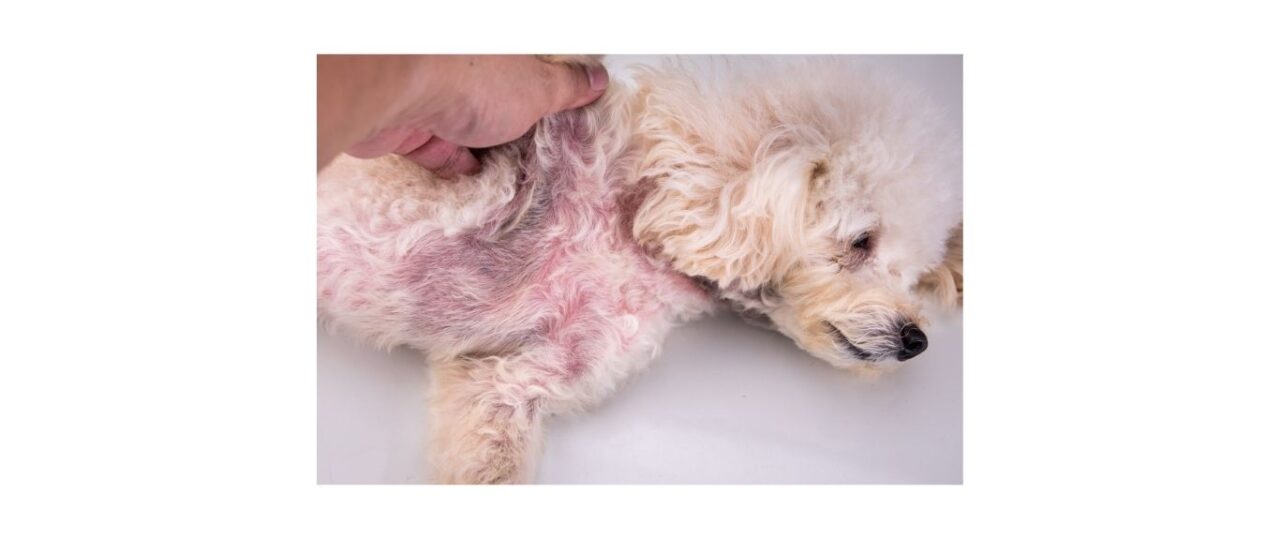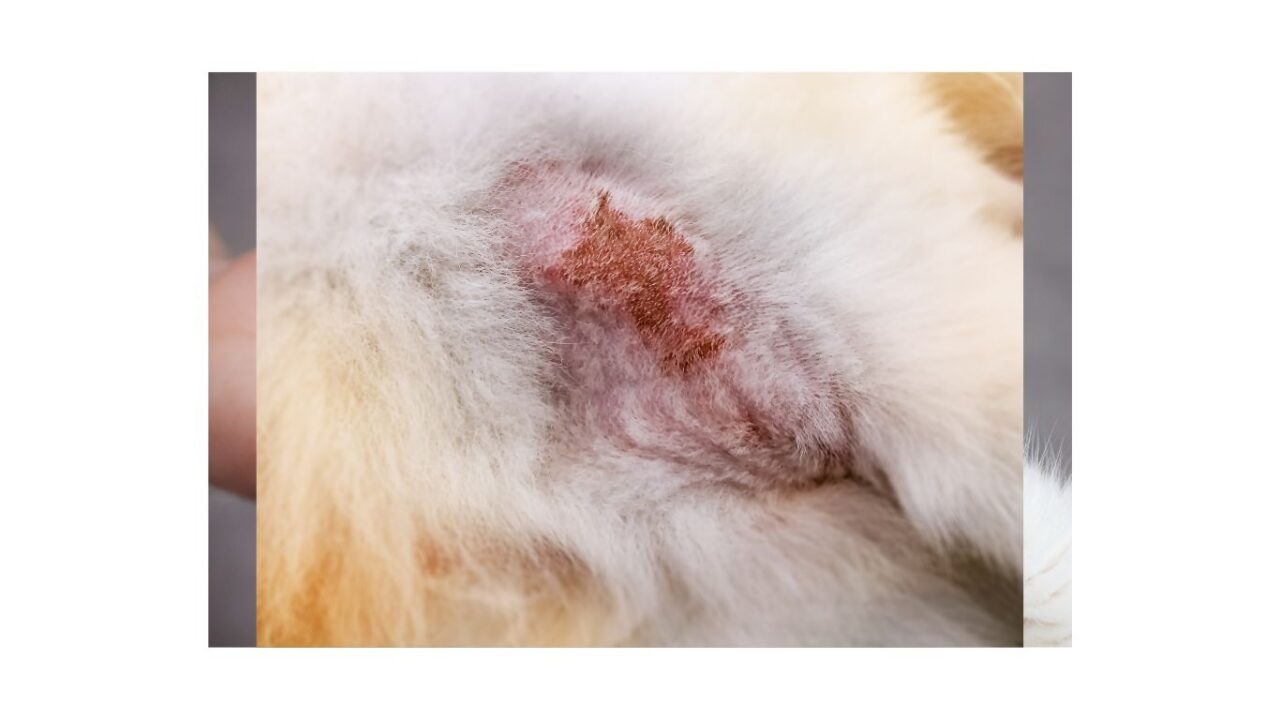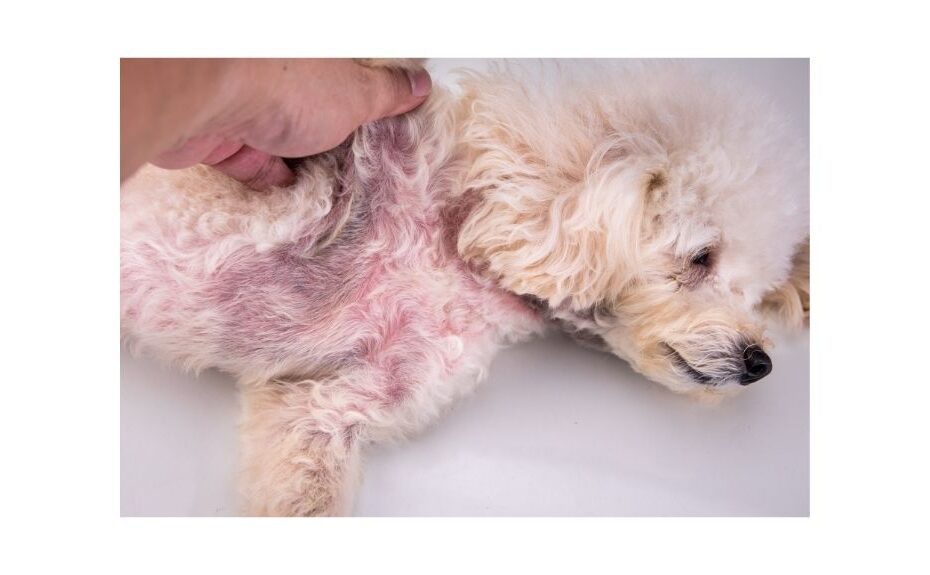As a caring pet parent, noticing signs of skin irritation in dogs can be concerning. Skin issues are quite common among dogs, and understanding the telltale signs can be crucial in identifying the underlying causes of dog skin irritations. So, let’s delve into what specific indicators you might observe on your furry friend when they’re grappling with skin irritation. Some conditions can bring about multiple signs, and recognising them early can play a pivotal role in seeking the right help.
Most common Signs Your Dog Has A Skin Condition
Dogs communicate their discomfort in various ways, and recognising these signs can be key to addressing their skin issues. Here’s a breakdown of what you might observe and the most common signs that your dog has a skin condition:
Hair Loss
Sparse or patchy coat, excessive hair shedding, or even chunks of fur falling out can be clear indicators of a skin condition. Scratching, rubbing, and gnawing due to itchiness can lead to hair loss. Additionally, some hormonal conditions can also contribute to hair shedding.
Addressing the underlying cause, especially itchiness, is crucial for treatment of skin irritation in dogs.

Rashes
Rashes often appear when dogs come into contact with allergens like certain plants or weeds. They can also arise due to heat, parasites, or skin infections. Look for inflamed and red skin, particularly in the belly and groin area.
Treating rashes involves removing the allergen through bathing, managing inflammation and itchiness (possibly with a vet’s guidance), and restoring the skin barrier.

Hot Spots/Wounds
Hot spots are lesions or wounds resulting from self-induced trauma and subsequent infection. Dogs scratch, rub, and chew, causing these wounds. Thick coats can trap moisture, making them more susceptible, especially in warmer months.
Factors like allergies, ear infections, matted hair, and stress can contribute. Treatment usually entails clipping hair around the wound, cleaning, and sometimes using antibiotics.

Papules/Pimples
These pimple-like lesions can indicate pyoderma (bacterial skin infection), ringworm, or mite infestations. These red, raised areas with pus-filled centers can occur due to skin injury, moisture exposure, altered bacteria, or suppressed immunity.
Scaly and Flaky Skin
Excessive scaling, flaking, and crusting fall under seborrhea. This condition can be dry or oily and greasy. Some breeds are genetically predisposed, but it can also stem from hormonal imbalances, allergies, parasites, infections, or environmental factors.
Diagnosing and treating the underlying cause is essential, often involving specialised shampoos.
Understanding for Better Management
Being attuned to the signs your dog exhibits is vital for understanding the root cause of their skin irritation. Take note of patterns and specifics, like “my dog gets itchy, red skin and loses hair on his back when he’s behind on flea control” or “my dog develops a rash and papules after romping in the wandering jew bush.”
These observations can guide your veterinarian in diagnosing and treating the issue more effectively.
Exploring Options
Managing skin irritation requires a multi-faceted approach. Early recognition, thorough vet assessments, and a tailored treatment plan can make a significant difference. It’s also worth remembering that pet insurance can provide a safety net, covering costs associated with diagnostics and treatments.
By deciphering the signs of skin irritation and partnering with your veterinarian, you can provide your canine companion with the care they deserve. Remember, understanding your dog’s language of discomfort is a step towards a happier and healthier furry friend.

